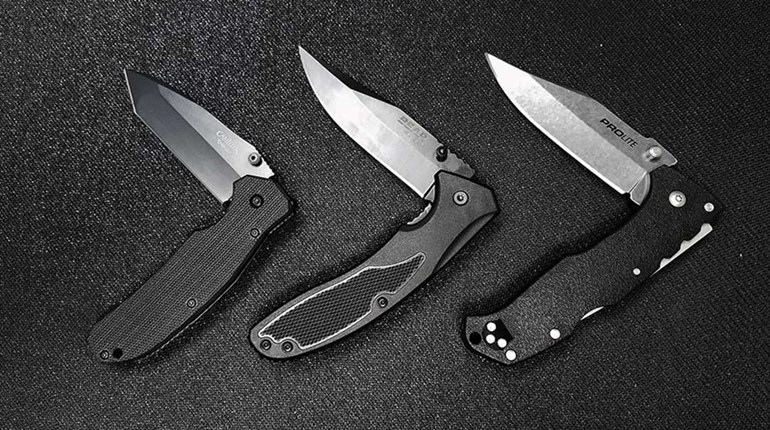
There are other bad things is this world. I grew up in the Allegheny Mountains, where copperheads and timber rattlesnakes were the price we paid for the serenity of the hills. I developed an intense dislike for both. Even a politician can't ruin a fishing trip or picnic faster than a poisonous snake.
When my grandpa wanted his grandkids to enthusiastically tackle some chore, he often told us to get to it like we were "killing snakes." I never really understood what that meant until I fought a 4-foot copperhead while armed with a shovel. You can kill serpents with hand tools, but if I ever do it again, it'll be because I'm out of ammo.
The only thing I could brag about after my first gun battle with a snake was that the timber rattler I eventually killed was almost as long as me. After a magazine full of hardball from a 1911, it was wounded and I was deaf. When the snake coiled up under a laurel bush, I fetched a .22-caliber rifle and finished the job. Lesson learned: It's hard to hit a moving target the size of a water hose.
If you sometimes encounter venomous snakes in your wanderings, a shotgun would seem the obvious choice. But, shotguns are hard to carry on your belt. As I am continually out and about in the underbrush, I needed a better way. I'm usually packing a 1911, so I picked up a box of CCI .45 ACP shotshells. I found one well-placed shot could separate a snake from its fanged end.
are also available in 9 mm, .38 Spl./.357 Mag., .40 S&W, .44 Spl./.44 Mag. and .45 Colt. The 9 mm round is loaded with No. 12 shot, the others with No. 9. All are sold 10 rounds to a box for about $16.
To see if CCI shotshells for other pistol chamberings were as effective as the .45 ACP load, I selected the 9 mm, .38 Spl./.357 Mag. and .40 S&W cartridges in addition to my standby for testing. Since I knew the .45 ACP load worked very well, I excluded the .44 Spl./.44 Mag. and .45 Colt loads, which have a similar velocity and heavier payloads. For the test, I fired one round from each chambering into 8-inch Birchwood Casey Dirty Bird targets placed at 4, 7 and 10 feet.
A snake can strike about one-half to two-thirds its body length. In North America, a 6-foot venomous snake is on the large side, so a safe engagement distance is on the other side of 4 feet. Sure, you could get closer, but like my 10-year-old says 350 times a day, "Why?"
In my experience, snakes are not that hard to kill. However, because of their primitive nervous system, it can take them a while to stop moving. A lethal wound to the body may still allow a snake to strike and fang you. Let them wiggle all they want; my idea of an adequate snake load is one that turns the head to pulp.
All the loads put pellets into the center, 1.5-inch circle at every distance. However, to receive the Richard Mann, snake-head-pulverizing, three-star seal of approval, the load had to totally eradicate 50 percent or more of the center circle. Those that managed 10 or more pellets in the center, along with good pattern density in the adjacent 3-inch circle, received two stars. Loads that put fewer than 10 pellets in the center or had thin patterns in the 3-inch circle got a single star. I'm sure two or three shots with even the one-star loads would kill a snake at the listed distances, but I would rather trust a single round. There were no malfunctions or failures to feed with any of the loads tested.
When fighting snakes with a single bullet, caliber and bullet style are mostly irrelevant. Last year, a Hydra-Shok from a .327 Fed. Mag. sent a 5-foot timber rattler to the big snake den in the sky. I've pacified serpents with a single .22 LR hollow-point and a 9 mm full-metal-jacket, too. However, if you only wound the snake, you'll have little chance to hit that writhing bundle of danger with subsequent, single-bullet shots. Also, remember, at a close range of 6 feet or so, a single bullet will strike just below where you're aiming. You'll need to hold a bit high, and this requires completely covering the snake's head with the front sight.
If you're a more peace-loving man when it comes to venomous reptiles or if regulations preclude you from shooting them, it's best to simply alter your route to avoid the snake. But I think many people spend too much time watching fame-hungry herpetologists petting serpents on TV and forget that poisonous snakes can be deadly. Then there are some folks who live just down the road from me in a place called Jolo, WV, where they love snakes so much they've become famous for handling them in a religious kind of way.
Not me. I consider venomous snakes the most devilish creatures on Earth. Anytime I'm in snake country, the first two rounds in my .45 are CCI shotshells. They're no good against a bad guy, but they have a way of warming the chill a big rattler sends up my spine.






































